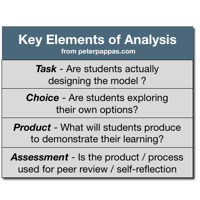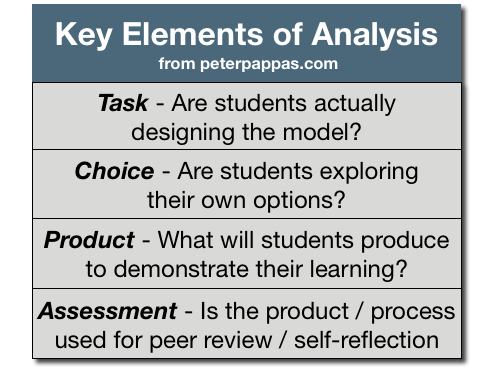This week I’m presenting at the national AMLE conference (middle level education) in Portland Ore. Quite nice since I live here!
My session
Thursday Nov 8 at 8AM
#1111 – Teaching Students to Analyze? Motivate with Skills, Choice and Reflection.
Here’s a preview
True analysis is messy work, but that’s where the learning takes place.
My talk has two themes – first, it’s a reflection on how analysis is taught in the classroom. Too often teachers give students a Venn Diagram and ask them to compare. What looks like analysis on the surface is often no more than re-filling information from the source material into the Venn. Graphic organizer are great to help students understand a variety of analytic models, but they often constrain students into someone else’s analytic framework.
Summarizing and comparisons are powerful ways to build content knowledge and critical thinking. But if students are going to master CCSS skills they need to design the model, find a way to express it to others, and have the opportunity self reflect on their product and feedback from peers. Get them started with graphic organizers, then show some courage and be less helpful. True analysis is messy work, but that’s where the learning takes place.
My session will utilize audience responders to first evaluate sample lessons in summarizing and comparing, then collectively develop critical benchmarks. Teachers will next be given frameworks for designing lessons which enable students to think like designers, to apply their learning strategies, share their conclusions and set the stage for self-reflection.
FlipNLearn: a foldable that students design, print and share.
Next, I will demonstrate how to meet these four keys to teaching analysis with FlipNLearn, a foldable that students design, print and share. It’s an innovative learning tool that students design on a computer, then print on special pre-formatted paper. The result – a clever foldable that flips through four faces of student selected text and images. FlipNLearn is a great way to give students a manageable design challenge that promotes teamwork, self-assessment and reflection. In 30 minutes, or less, they can produce tangible product that blends the best of PBL and CCSS skills in communication. If you can’t make my session, look for me at the IMCOM vendor booth #819 for free tips on Portland’s best pubs and grub.


